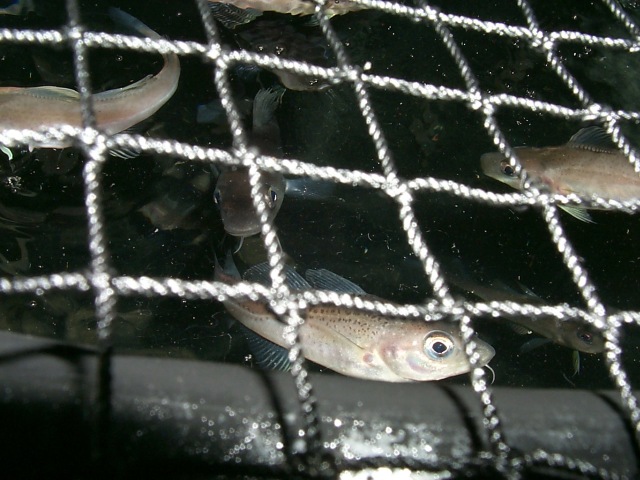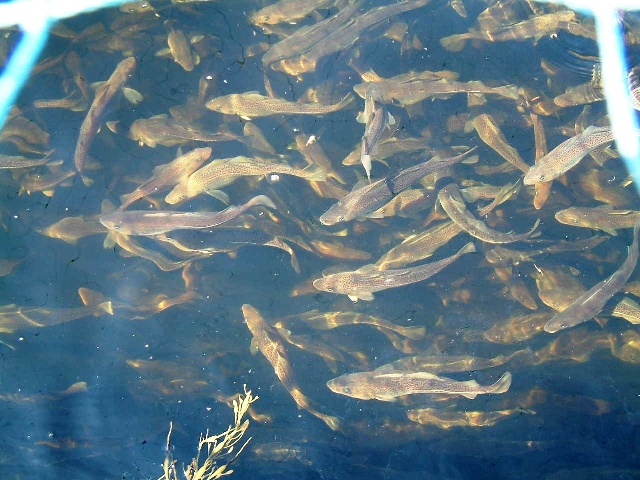Atlantic Cod

Family: Gadidae
Scientific Name: Gadus morhua
Description: Atlantic Cod have a heavy elongate body that is compressed posteriorly. The head is large with a blunt snout and terminal mouth with the lower jaw slightly shorter than the upper. A barbel is located under the chin. Their lateral line distinct pale colour from the body. The body colour ranges from grey, green, brown to red depending on living conditions and diet.
Habitat and Distribution: Lives in cool-temperate to subarctic waters, ranging from inshore regions to the continental shelf. They are adapted to bottom feeding and spend much time just off the bottom.
Diet: Voracious eaters that use their barbel and pelvic fin rays to sense food in the bottom substrate. Diet of the Atlantic Cod depends on the stage. Fry eat copepods, amphipods and other small crustaceans and juveniles and young adults eat larger crustaceans euphausiids, mysids, shrimp and crab. After growing to about 50cm long, they consume fish like sandlance, capelin, redfish, herring and invertebrates such as molluscs, tunicates, ctenophores and echinoderms.
Growth: Growth rates vary with stock and location. Cod older than 20 years old are rare, but 29 year old cod have been recorded. The largest cod recorded was 95.9kg.
Reproduction: In the Canadian Atlantic region, spawning begins in the north as early as February and in the south as late as December. Atlantic Cod are broadcast spawners, with the number of eggs produced depending on the size of the animal.
Predation: Young cod are preyed upon by older cod, squid and polluck. Adult cod can be preyed upon be seals (Harbour, Grey and Harp) and Man.
Relation to man: The Atlantic Cod fishery was one of the leading food fisheries in the world and was Canada's single most important commercial species in terms of landed value. Cod cheeks and tongues are considered delacacies by some maritimers. Prior to 1992 groundfish moratorium, the quota was approximately 250,000 tonnes. The total cod quota in 1998 was 40,018 tonnes for all of Atlantic Canada.
OSC Images
 |
 |
 |
 |
OSC Research
Gamperl Lab - Physiological Aspects of Finfish Culture - The commercial production of cod and haddock in Atlantic Canada is in its infancy. In cage culture, these species will face significant seasonal fluctuations in temperature, and temperature extremes.
Snelgrove Lab - MSc student Ryan Stanley is conducting a biophysical study of connectivity in early life history stages of coastal Newfoundland fishes using larval cod.